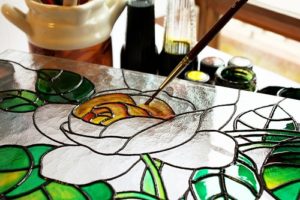Stained glass windows can be an interesting addition to any home. These are delicate works of art that can add class and style to any room. However, they’re also daunting because you’re not sure how to clean them. Window cleaning Perth could damage that beautiful work, after all.
A building with stained glass windows has a major selling point. The issue is that a lot of people who buy them are nervous about cleaning the glass.
Everything else can end up cleaned meticulously. Dust is dusted. Stains are removed. Problems are scrubbed. The problem is that the stained glass can get left alone, because you don’t wash a work of art with ordinary cleaning products. Right?
Just what do you use to clean stained glass? If you’ve left it alone for more than a year, it’ll be in a desperate need of a cleaning. What do you do?
How to Clean
Well, you start with the right materials.
A soft, dry cloth is how you get going. Distilled water on the cloth will help remove almost any filth while minimizing residue on the glass. If you’re still seeing dirt or grime, you’ll need a cleaning product.
A cleaning product has to meet some requirements. It has to be ammonia-free. It has to be non-abrasive and have no vinegar. Make sure that it’s pH-neutral. This combination will tackle almost any stained glass found in a residential building.
When cleaning, lay towels on the sill. This will catch any drips. You’ll have a lot of drips, trust us.
Step by Step
Start from the top, work your way down. This lets you wipe away any drips that are coming from above, preventing the need to clean the window twice as you go along.
Individual pieces of glass in a stained window will have different colors, with a strip of lead separating them. Leaded glass requires that you wash each piece individually. Don’t clean more than one area at once, otherwise you’re not going to clean anything.
If you encounter stubborn dirt, rub with more pressure. However, be careful to avoid damaging the glass underneath or removing the staining.
A cotton swab can be used for getting corners and edges. Sometimes a big cloth can’t hit these areas, so a precision tool is more useful.
Finally, you’re going dry the panels. Use a soft, dry cloth for the job. A paper towel will work too. Repeat this for each panel. Note that you might not be able to do this for the outside, if the window has a protective layer that limits access.
